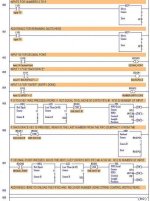Hi
Can anybody tell me how to generate a numeric value from digital inputs?
I have 10 inputs each equating to a number so for example input 0 when high (1) is 0 and when input 4 is high (1) will be 4.
Then inputs cannot be set to make the numeric value but will be input as a sequence as the inputs are connected to a key pad, so when input 1 is high my numeric value will be 1 then if input 4 becomes high the value needs to be 14 and so on.
Can anybody tell me how to generate a numeric value from digital inputs?
I have 10 inputs each equating to a number so for example input 0 when high (1) is 0 and when input 4 is high (1) will be 4.
Then inputs cannot be set to make the numeric value but will be input as a sequence as the inputs are connected to a key pad, so when input 1 is high my numeric value will be 1 then if input 4 becomes high the value needs to be 14 and so on.






